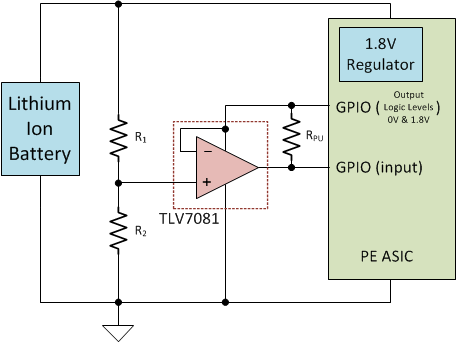JAJSFM7A May 2018 – June 2018 TLV7081
PRODUCTION DATA.
8.2.2 Battery Monitoring in Portable Electronics
A recommended circuit diagram for monitoring a battery voltage in a personal electronic device is shown in Figure 23. In this diagram, the GPIO pin of an application specific integrated circuit (ASIC) serves as the supply voltage and the voltage reference for the TLV7081. Using a GPIO pin to power the TLV7081 is possible because of the low quiescent current of the TLV7081. In systems where power consumption needs to be further reduced, the GPIO pin can be used to power-cycle the TLV7081.
 Figure 23. Battery Monitor
Figure 23. Battery Monitor